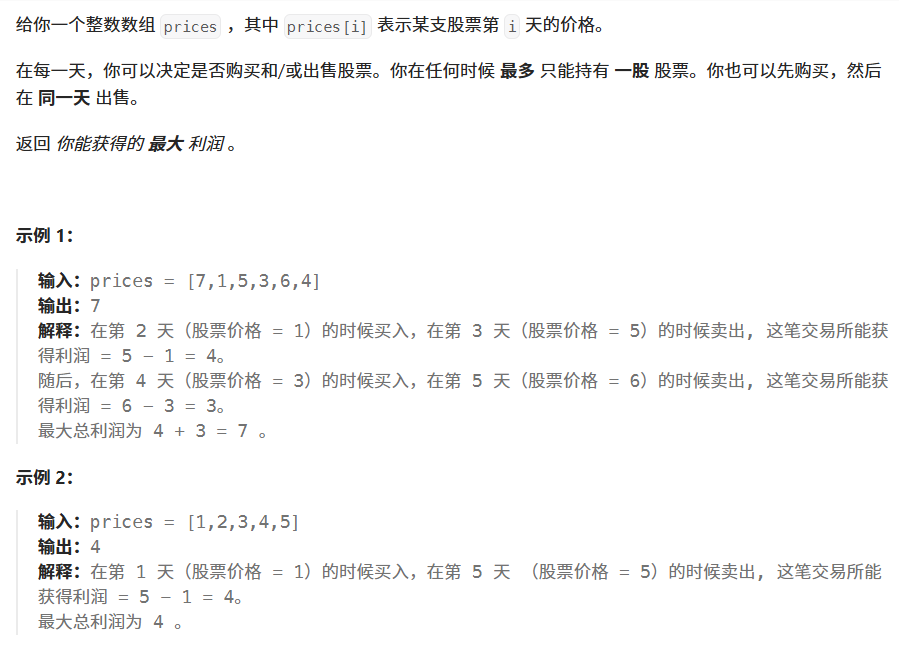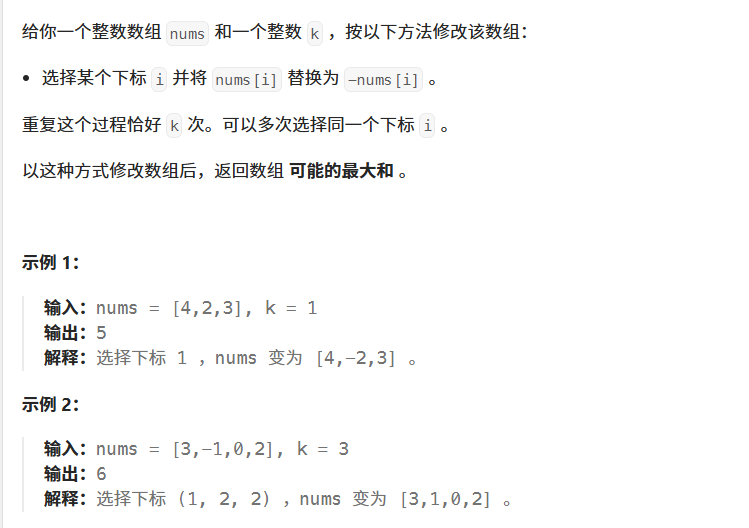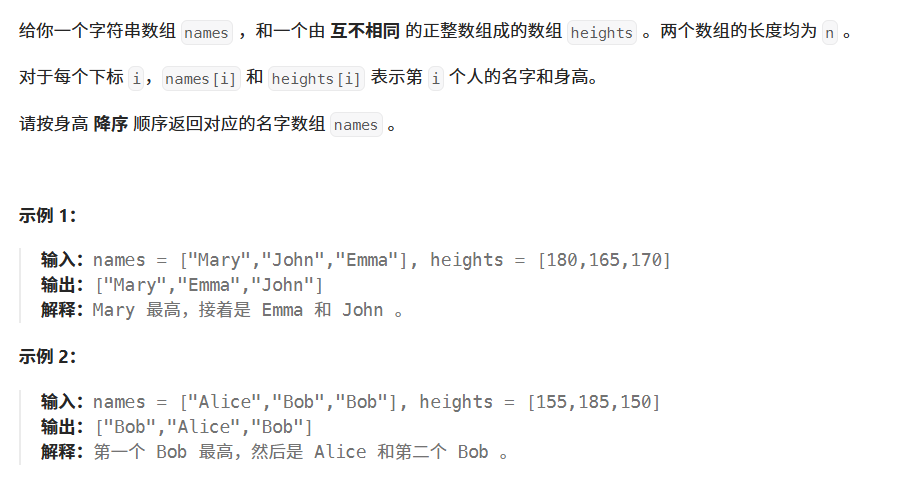📝前言说明:
- 本专栏主要记录本人的贪心算法学习以及LeetCode刷题记录,按专题划分
- 每题主要记录:(1)本人解法 + 本人屎山代码;(2)优质解法 + 优质代码;(3)精益求精,更好的解法和独特的思想(如果有的话);(4)贪心策略正确性的 “证明”
- 文章中的理解仅为个人理解。如有错误,感谢纠错
🎬个人简介:努力学习ing
📋本专栏:C++刷题专栏
📋其他专栏:C语言入门基础,python入门基础,C++学习笔记,Linux
🎀CSDN主页 愚润泽
你可以点击下方链接,进行其他贪心算法题目的学习
| 点击链接 | 开始学习 |
|---|---|
| 贪心day1 | 贪心day2 |
| 贪心day3 | 贪心day4 |
| 贪心day5 | 贪心day6 |
| 贪心day7 | 贪心day8 |
| 贪心day9 | 贪心day10 |
也可以点击下面连接,学习其他算法
| 点击链接 | 开始学习 |
|---|---|
| 优选专题 | 动态规划 |
| 递归、搜索与回溯 | 贪心算法 |
122. 买卖股票的最佳时机 II
题目链接:https://leetcode.cn/problems/best-time-to-buy-and-sell-stock-ii/description/

个人解
思路:
- 拆分成一天一天进行无限次交易
- 后一天比当前股票便宜就重新买入,比当前股票贵就直接卖出 (贪心策略)
- 细节: 因为可能出现连续递增,所以在卖出后,直接将当天价格作为买入的价格继续贪心
- 其他解法:也可以用一个双指针去找每个上升区间的开始和结束位置,然后添加利润
屎山代码:
class Solution {
public:
int maxProfit(vector<int>& prices) {
int PreMIN = INT_MAX;
int ans = 0;
for(auto x: prices)
{
if(x <= PreMIN)
PreMIN = x;
else
{
ans += x - PreMIN;
PreMIN = x; // 代表未买入状态,同时避免连续递增的股票
}
}
return ans;
}
};
时间复杂度: O ( n ) O(n) O(n)
空间复杂度: O ( 1 ) O(1) O(1)
1005. K 次取反后最大化的数组和
题目链接:https://leetcode.cn/problems/maximize-sum-of-array-after-k-negations/description/

个人解
思路:
- 有点数学题的感觉
- 先将数组排序
- 贪心策略:
- 从小到大,现将负数取反
- 如果没有负数了, 则
k % 2。(如果结果为1,则将绝对值最小的数取反)
屎山代码:
class Solution {
public:
int largestSumAfterKNegations(vector<int>& nums, int k) {
ranges::sort(nums);
int sum = 0;
int Min = INT_MAX;
for(auto num: nums)
{
Min = min(Min, abs(num));
if(num < 0 && k > 0)
{
sum -= num;
k--;
}
else
sum += num;
}
if(k % 2) // 如果还有取反次数,则剩下的一定为非负数了
sum -= 2 * Min; // 把之前加上的减掉
return sum;
}
};
时间复杂度: O ( n l o g n ) O(nlogn) O(nlogn)
空间复杂度: O ( 1 ) O(1) O(1)
2418. 按身高排序
题目链接:https://leetcode.cn/problems/sort-the-people/description/

个人解
屎山代码:
class Solution {
public:
vector<string> sortPeople(vector<string>& names, vector<int>& heights)
{
int n = names.size();
vector<pair<int, int>> hash; // <身高, 下标>, 存在vector中,便于后续排序
for(int i = 0; i < n; i++)
hash.emplace_back(heights[i], i);
ranges::sort(hash.begin(), hash.end(), [](const auto& a, const auto& b){
return a.first > b.first; // 大的优先级高
});
vector<string> ans;
for(auto [h, index]: hash)
ans.emplace_back(names[index]);
return ans;
}
};
时间复杂度: O ( n l o g n ) O(nlogn) O(nlogn)
空间复杂度: O ( n ) O(n) O(n)
🌈我的分享也就到此结束啦🌈
要是我的分享也能对你的学习起到帮助,那简直是太酷啦!
若有不足,还请大家多多指正,我们一起学习交流!
📢公主,王子:点赞👍→收藏⭐→关注🔍
感谢大家的观看和支持!祝大家都能得偿所愿,天天开心!!!